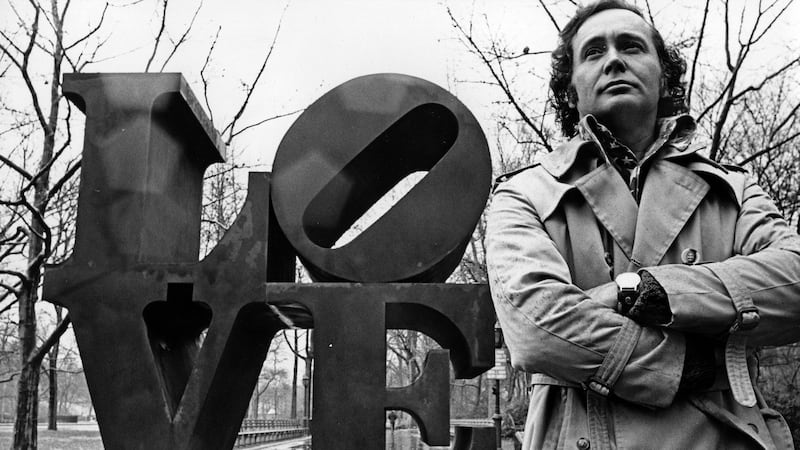An ongoing mystery surrounds the final days of the American pop artist Robert Indiana, who died on an island off the coast of Maine earlier this year, aged 89. Not only has the cause of his death still to be officially determined, but a lawsuit filed shortly before his demise alleged that in recent years, the reclusive artist may have been subject to exploitation and elder abuse.
It’s a long way from the blissed-out 1960s innocence which led Indiana to create a sculpture using the letters L, O, V, and E rendered in capitals, the first two stacked on top of the others and the letter “O” tilted as if it were caught in the midst of a passionate swoon.
An immediate success, it catapulted him to fame and went on to become one of the most iconic – and most plagiarised – works of art of all time. The LOVE sculpture has shown up on T-shirts, jewellery, album covers and more besides. There’s a mammoth example in the centre of John F Kennedy Plaza in Philadelphia – known locally as “Love Park”.
An article in the Portland Press Herald this week quoted Indiana's lawyer as saying that an inventory of the artwork left behind in his historic Vinalhaven home included at least one "LOVE" sculpture, almost doubling the estimated value of his estate to some $50 million. More than two dozen other artworks have not yet been accounted for.
Love-hate relationship
Indiana – his real name was Robert Clark until he took on the name of the US state where he was born and raised – had a sort of love-hate relationship with his famous creation, which he reworked over and over in many different forms. It first appeared in a series of poems in 1958, then in a painting with the words “Love is God”. It was used for a Christmas card for the Museum of Modern Art in New York in 1964, and was put on a US stamp in 1973.

In 1995 Ray Farrell, Indiana’s Irish-American art dealer in Maine, collaborated with the artist to produce a “Love Cup” incorporating the famous design. Designed to commemorate president Bill Clinton’s White House Conference for Trade and Investment in Ireland, the cup was manufactured by Mullingar Pewter in a limited edition of 300.
One of these cups – accompanied by a letter from Clinton – will be auctioned at Whyte’s in Dublin in the autumn, with a guide price of €1,000 to €1,500.
It’s an intriguing piece of US art history, not least because Indiana was such a fascinating character. He grew up in a working-class family and liked to say he had been inspired by neon signs at petrol stations during his childhood. At the height of his fame, he insisted that he had always regarded himself as a sign painter.
Some signs were more auspicious than others. Many of Indiana’s artworks revolved around monosyllabic words such as “die” or “hug”. At the 1964 New York World’s Fair, he installed a 20ft high flashing sign which read “EAT’. Not only did it repeatedly short-circuit the fair’s electricity supply, it also attracted large number of irate tourists who assumed it was a restaurant and were not impressed to find nothing edible in the vicinity.
Lovey-doveying
In the late 1970s, disillusioned by the New York art scene, Indiana moved to the island of Vinalhaven, 15 miles off the coast of Maine. He lived in a former Odd Fellows Hall and listed building known as the Star of Hope, emerging occasionally to create new pieces – a “HOPE” image which used similar iconography to “LOVE” raised more than a million dollars for Barack Obama’s presidential campaign.
When Obama was elected, he invited Indiana to the White House for a reception. Indiana failed to show up: lovey-doveying with presidents clearly wasn’t his thing.
But the poignancy of his death and the ongoing legal battles – a conference on the federal lawsuit is scheduled in New York at the end of this month, and a hearing in August should determine the whereabouts of the missing pieces of art – may just transform the Clinton Cup from a quirky item into a sound investment.
Whyte's sale of Irish & International Art will take place on October 1st. whytes.ie
















